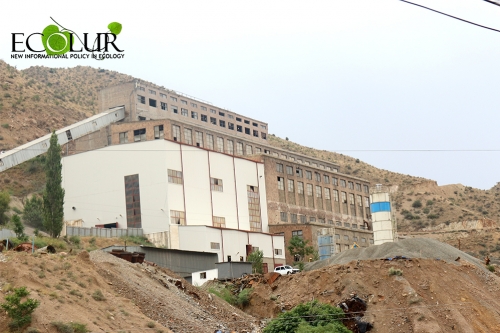

EcoLur
The explosions carried out in Agarak copper and molybdenum combine operated by “Agarak Copper and Molybdenum Combine” CJSC resulted in the harm caused to the houses in Kartchevan residential area, Syunik Region: cracks have emerged, there is a risk of collapse. “The explosions are like quakes,” a young woman said in her interview to EcoLur showing the damaged parts of her house. “Every day, at around 12:00-13:00, we are getting alert in order to be able to run out of the houses in case of explosions,” A. said.




No one has ever received any compensation or support from the administration of Agarak copper and molybdenum combine. The houses of other Kartchevan residents have also cracked because of the explosions. They also voiced the problem of the village pollution with dust because of the mining operations. The barren rocks from the mine are located at a distance of around 1 km from the residential areas at a higher altitude from where the wind blows off the dust saturated with heavy metals towards the village. The villagers have also suffered from the industrial wastewater flowing out of the area of Agarak combine, which has flows into the cultivated land areas of Kartchevan residents thus polluting the soil, damaging crops and fruit trees.

Despite suffered adverse effects the residents couldn’t remember having any projects implemented in the village for the mitigation of the environmental problems. According to the EITI first national report, in 2016-2017 within the frames of socio-economic development commitments Agarak copper and molybdenum combine has allotted 25 million and 63,500,000 AMD, respectively, nevertheless, works were carried out only in Agarak town out of the impacted residential areas. The construction of the children’s park and other socio-economic projects were implemented in Agarak Town.
In 2016-2017, the subventions allotted to the affected communities and relevant environmental projects were largely implemented in Agarak Town. In 2016, 3,340,000 AMD was directed to Agarak Town under a subvention program, while 1,382,000 AMD was directed to Kartchevan for the implementation of health measures. In 2017, 1,036,000 AMD was directed to Agarak community only under a subvention project again only for the implementation of health programs. Meghri Community Head Mkhitar Zaqaryan informed EcoLur that within the frames of health measures the kindergartens in the impacted communities were only provided with extra food.
“Whether giving meat to the kindergartens will improve people’s health? If the dust is going to be here every day, what kind of matters will be solved with this meat,” Kartchevan residents said.
Under them, they won’t benefit from imposing of any administrative fine on the combine in any manner.

Kartchevan residents proposed the following actions to mitigate the adverse impact of the combine operations:
• To obligate the combine to pour water on the dumps and roads, as well as to allocate money to the village,
• To assess the impact of explosions in the mine and the impact of mining operations on human health and houses,
• To carry out independent examinations of soil, water and agricultural products,
• To increase the extent of environmental fees and to implement targeted projects with these funds,

In their turn, the Agarak residents proposed,
1. To enhance the state control over the operations of Agarak copper and molybdenum combine, to ensure the participation of people in these works and grant an opportunity to have a dialogue with the combine administration.
2. To public the report of the combine current operations on the website of the combine,
3. To install cameras to enable surveillance so that dumps are not filled onto the land areas of agricultural significance,
4. To carry out proper dust sputtering.
5. Provision of medical insurance to the population injured with the combine operations by the combine.
6. To decrease the intensity of explosions.
7. To carry out greening in Agarak Town.
This material has been prepared within “Mining-Impacted Communities – Full Participants in EITI Process'” project implemented by EcoLur with the USAID support within the frames of “Engaged Citizenry for Responsible Governance” project implemented by Transparency International Anticorruption Center.

This article is made possible by the generous support of the American People through the United States Agency for International Development (USAID). The contents of this article are the sole responsibility of the authors and do not necessarily reflect the views of USAID or the United States Government.
July 30, 2019 at 15:47
